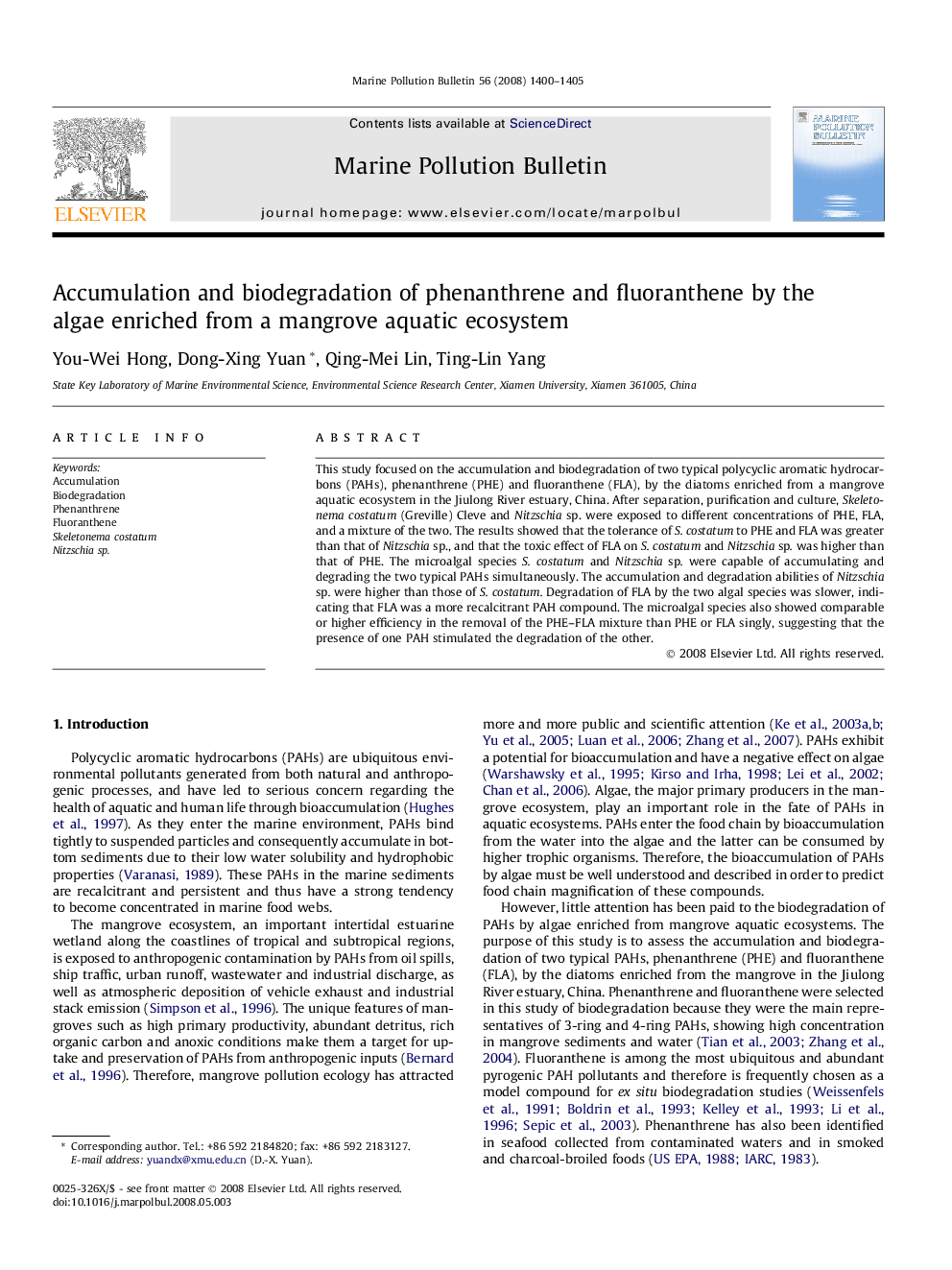| Article ID | Journal | Published Year | Pages | File Type |
|---|---|---|---|---|
| 4477292 | Marine Pollution Bulletin | 2008 | 6 Pages |
This study focused on the accumulation and biodegradation of two typical polycyclic aromatic hydrocarbons (PAHs), phenanthrene (PHE) and fluoranthene (FLA), by the diatoms enriched from a mangrove aquatic ecosystem in the Jiulong River estuary, China. After separation, purification and culture, Skeletonema costatum (Greville) Cleve and Nitzschia sp. were exposed to different concentrations of PHE, FLA, and a mixture of the two. The results showed that the tolerance of S.costatum to PHE and FLA was greater than that of Nitzschia sp., and that the toxic effect of FLA on S. costatum and Nitzschia sp. was higher than that of PHE. The microalgal species S. costatum and Nitzschia sp. were capable of accumulating and degrading the two typical PAHs simultaneously. The accumulation and degradation abilities of Nitzschia sp. were higher than those of S. costatum. Degradation of FLA by the two algal species was slower, indicating that FLA was a more recalcitrant PAH compound. The microalgal species also showed comparable or higher efficiency in the removal of the PHE–FLA mixture than PHE or FLA singly, suggesting that the presence of one PAH stimulated the degradation of the other.
